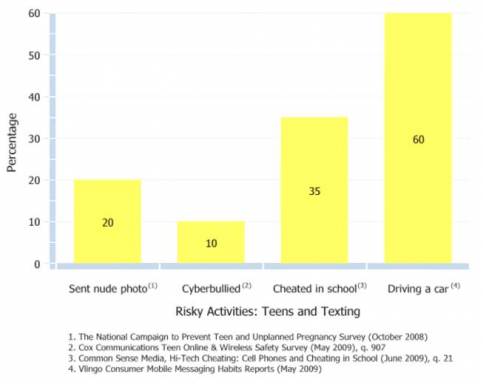 Now that most kids carry their video-enabled cell phones around everywhere with them, everybody is a cameraman. This can be a good thing – we’ve all heard stories about a thief who was caught because a bystander just happened to catch the robbery on his cell phone. But it can also be a source for trouble when fight videos start getting posted online.
Now that most kids carry their video-enabled cell phones around everywhere with them, everybody is a cameraman. This can be a good thing – we’ve all heard stories about a thief who was caught because a bystander just happened to catch the robbery on his cell phone. But it can also be a source for trouble when fight videos start getting posted online.
Clips of two teens punching, kicking, and pulling each others' hair are surprisingly easy to find online, most of them posted by other kids who stood by and recorded the fight on their cell phones.
Steven Woda

Recent Posts
Intro to Webkinz
 Surely you’ve seen those cuddly little stuffed animals called Webkinz. Maybe your child just received their very first Webkinz as a gift, or announced that he wants to collect them like so-and-so at school, or is already playing Webkinz but you aren’t sure that it’s totally safe. Here’s a fast Webkinz tutorial for parents.
Surely you’ve seen those cuddly little stuffed animals called Webkinz. Maybe your child just received their very first Webkinz as a gift, or announced that he wants to collect them like so-and-so at school, or is already playing Webkinz but you aren’t sure that it’s totally safe. Here’s a fast Webkinz tutorial for parents.
What is Webkinz?
Webkinz is part online gaming site, part social network for kids ages 6 to 13. (Though usually, the fuzzy pets and cute graphics appeal more to girls and younger boys.) Each Webkinz pet, which retails for about $10.99, comes with an online code that allows your child to “adopt” the pet online and take care of it in the virtual Webkinz world for one year. In order to continue past the one-year mark, you’ll need to buy a new Webkinz.
Girls More Avid Texters Than Boys
 We know that tweens and teens are really, really good at texting. Texting while walking, texting discreetly in class, carrying on multiple text conversations at once. But is there a difference among kids in who texts the most?
We know that tweens and teens are really, really good at texting. Texting while walking, texting discreetly in class, carrying on multiple text conversations at once. But is there a difference among kids in who texts the most?
Turns out that it’s no coincidence that both the winners and half-dozen finalists in the 2009 and 2010 LG Texting Championships have been female. Girls do the bulk of the texting the majority of the time, specifically teenage girls.
Teen Internet Safety and Mobile Phones
 Putting the family computer in a well-trafficked, central location of the house has always been one of the first lines of defense for parents who want to keep their kids safe online. But monitoring kids' online life is harder for parents in this decade because of Internet-enabled cell phones.
Putting the family computer in a well-trafficked, central location of the house has always been one of the first lines of defense for parents who want to keep their kids safe online. But monitoring kids' online life is harder for parents in this decade because of Internet-enabled cell phones.
The traditional computer still appears to be the method of choice for going online (probably because of the bigger screen and the easy-to-maneuver computer mouse), but the cell phone is catching up fast.
Hypertexting Teens More Likely to Have Sex, Drink, and Do Drugs
Do yo u know how much texting and social networking your teen is doing? You may want to sit up and play closer attention to how your child communicates online – not just looking for “red flags,” but at the overall amount of time they spend doing it.
u know how much texting and social networking your teen is doing? You may want to sit up and play closer attention to how your child communicates online – not just looking for “red flags,” but at the overall amount of time they spend doing it.
Researchers from the Case Western Reserve University School of Medicine found that excessive texters and social networkers were more likely to drink, do drugs, and be sexually active.
According to the study, teens who sent more than 120 texts per school day were:
- 3.5 times more likely to have had sex
- 90% more likely to report four or more sexual partners
- twice as likely to have tried alcohol
Warning Signs of Grooming by an Internet Predator
 Most people your child meets on the Internet will be harmless, but there’s still danger in making friends online. Child predators use the Internet to meet children and form relationships with them, the end result of which is to molest or abuse them in the future. This process is known as “grooming,” and it’s vital that you recognize grooming while it’s happening, so you can stop it before it goes too far.
Most people your child meets on the Internet will be harmless, but there’s still danger in making friends online. Child predators use the Internet to meet children and form relationships with them, the end result of which is to molest or abuse them in the future. This process is known as “grooming,” and it’s vital that you recognize grooming while it’s happening, so you can stop it before it goes too far.
Predators groom children by lending a listening ear, making them feel special, treating them “like a grown up,” introducing sexual speech or pornography to make such acts seem more acceptable, encouraging secrets, and introducing them to other adult behaviors like drinking and doing drugs.
Depression More Likely in Cyberbullying Victims Than in Cyberbullies
 We all have heard the old adage that bullies only pick on others because they feel bad about themselves. But when it comes to cyberbullying, that may not actually be as true as we thought.
We all have heard the old adage that bullies only pick on others because they feel bad about themselves. But when it comes to cyberbullying, that may not actually be as true as we thought.
A recent study from the Journal of Adolescent Health found that victims of cyberbullying are more depressed than the kids who bully them, while studies of traditional face-to-face schoolyard bullying show an equal rate of depression among bullies and victims.
New Facebook Safety Page
 Facebook seems to have more of an interest these days in keeping its users, particularly children and teens, safe from social networking dangers such as cyberbullying and child predators.
Facebook seems to have more of an interest these days in keeping its users, particularly children and teens, safe from social networking dangers such as cyberbullying and child predators.
In April a revamped Safety Center appeared on Facebook, with targeted safety information for parents, educators, teens, and law enforcement.
After the Facebook-related deaths of 17-year-old Ashleigh Hall in March and 18-year-old Nona Belomisoff in May,
Read More »Former Teacher Pleads Guilty to Sexting with Student
 Melinda Dennehy, a former Londonberry High School teacher, pleaded guilty to emailing nude photographs of herself to a 15-year-old male student. Dennehy, 41, of Hampstead, New Hampshire pleaded guilty to misdemeanor indecent exposure.
Melinda Dennehy, a former Londonberry High School teacher, pleaded guilty to emailing nude photographs of herself to a 15-year-old male student. Dennehy, 41, of Hampstead, New Hampshire pleaded guilty to misdemeanor indecent exposure.
In March of this year nude photos of Melinda Dennehy, then a sophomore English teacher, were passed around the high school. Dennehy resigned just three weeks after the photos surfaced. Police later determined that Dennehy sent four photos to the 15-year-old male student with her genitals exposed.
Kids, Texting and Text Lingo
Are you concerned that your child’s thumbs might fall off as a result of sending too many text messages? Well join the club. If your home is anything like mine than you’re seeing the number of text messages being sent and received by your child head steadily upwards. The average American teen now sends or receives one text message every nine minutes!
Text messaging is no longer just another way to connect with one another; it has become a cultural phenomenon. Parodies on television of teens and tweens texting to one another while in the same room are funny because we can all imagine our own children doing the same thing. We’re asked to text in our vote to American Idol. Barak Obama won the White House, in part, because of his team’s ability to engage young voters via text messaging. The Pew Internet & American Life Project recently confirmed what every parent with a teenager already knows – texting has become the preferred channel of basic communication between teens and tweens and their friends.
Text messaging, officially called Short Message Service (SMS), has grown in popularity with teens for three primary reasons:
Don't Talk To Strangers: Facebook Monitoring
 In March, Ashleigh Hall’s name was splashed across newspapers everywhere after her body was found in a ditch. The 17-year-old had done something that a worrisome number of teens do: made a new friend on Facebook and gone to meet him.
In March, Ashleigh Hall’s name was splashed across newspapers everywhere after her body was found in a ditch. The 17-year-old had done something that a worrisome number of teens do: made a new friend on Facebook and gone to meet him.
A 2006 survey commissioned by Cox Communications with the National Center for Missing & Exploited Children reported that:
- 71% of teens reported receiving messages online from someone they don’t know
- 45% have been asked for personal information by someone they don’t know
- 30% have considered meeting someone that they’ve only talked to online
- 14% have actually met a person face-to-face that they’ve only talked to on the Internet (the figure for teens ages 16 and 17 jumps to 22%)
In Ashleigh’s case, her new friend was a predator who had lied about his identity, posing as a 17-year-old boy. Many were quick to point fingers at Facebook: can’t they do more to prevent people from lying about who they are online?
Read More »Teenage Sexting and What Parents Can Do About It
.jpg?width=231&height=154&name=Depositphotos_24869343_xs_(1).jpg) Sexting. To a parent’s ears, even the name is scary. Here are some of the straight facts about sexting, who is doing it, and why. And most importantly, how to talk to your kids about why it can be dangerous.
Sexting. To a parent’s ears, even the name is scary. Here are some of the straight facts about sexting, who is doing it, and why. And most importantly, how to talk to your kids about why it can be dangerous.
Sexting is using mobile technology to send a suggestive nude or semi-nude picture of oneself to someone else. It’s been around since about 15 minutes after the invention of the camera phone and the text message, but has gotten much more prevalent in recent years now that so many teens and tweens carry around their own personal cell phones.
Xbox 101: What Every Parent Needs to Know

Xbox. Xbox 360. Xbox LIVE. What’s the difference between these systems and what do we need to know as parents. Let’s start with the basics.
When I was a kid “social gaming” meant sitting around with your friends on beanbag chairs, waiting for your turn at Pac-Man with the one joy stick we had. The definition of “social gaming” for our children’s generation is very different.
Today, our children can pick up their controller and play a game of Halo with someone 1,000 miles away by connecting online. They can check to see if their friends are “online” and join them in “multi-player mode”, all while sitting on beanbag chairs in different houses. The world of gaming is changing rapidly and as parents we need to change the image we have of how kids play video games.
Microsoft’s Xbox is just one example of “social gaming”. These systems allow the user to connect online through your homes internet connection to download new games, chat or play with others users, download and watch movies, or even share photos.
Facebook as a Photo Sharing Site
 Facebook isn’t strictly a photo sharing site, but it’s increasingly being used as one – especially by teens.
Facebook isn’t strictly a photo sharing site, but it’s increasingly being used as one – especially by teens.
In almost any group of tweens or teens, someone is likely to have a camera phone. They can quickly snap a picture, upload it directly to Facebook from their phone, and it is instantly disseminated through their entire network of friends. This can be a convenient way to relay messages, but it can also be dangerous if your child isn’t aware of who can see their pictures (and the captions they tack on them.)
The four Privacy Settings for photos on Facebook are:
-
Everyone
Cyberbullying: Do You Know What To Look For?
 Cyberbullying is when a child is tormented, threatened, harassed, humiliated or embarrassed using technology like text messaging, email, instant messaging, blogs, websites and online games. This isn’t the bullying we experienced as a child. Unlike traditional bullying, there is no refuge for the victims because cyberbullying goes on 24-hours a day. It invades a child’s home and is often unrelenting. One third of American teens and one sixth of tweens have been cyberbullied – that’s 13 million kids! Examples of cyberbullying include:
Cyberbullying is when a child is tormented, threatened, harassed, humiliated or embarrassed using technology like text messaging, email, instant messaging, blogs, websites and online games. This isn’t the bullying we experienced as a child. Unlike traditional bullying, there is no refuge for the victims because cyberbullying goes on 24-hours a day. It invades a child’s home and is often unrelenting. One third of American teens and one sixth of tweens have been cyberbullied – that’s 13 million kids! Examples of cyberbullying include:
-
Threatening, malicious or harassing language aimed at another person
-
Sending or forwarding (or posting online) pictures of another person via text message, email, instant messenger with the intent of humiliating or embarrassing them
Kids Safety Question: Could Your Kids Be Building An Army of Webkinz?
Being online doesn't just refer to the computer located in your kitchen. Kids access the Internet from laptops, mobile phones, gaming consoles and handheld devices. Are your kids building an army of Webkinz? Are you worried your teen will have arthritic thumbs from texting too so much? If this sounds familiar, let's talk.
Obviously technology has a ton of benefits to our children but you may be concerned about what they're doing in the world of bits and bytes and what decisions they're making. If you're not concerned, you are probably at least at least curious. Most of us don't fully understand some aspects of the technology that our kids are using. The good news is that you can become more familiar with technology and you can learn about the issues that affect your kids online. These issues include cyberbullying, revealing too much and predators.



